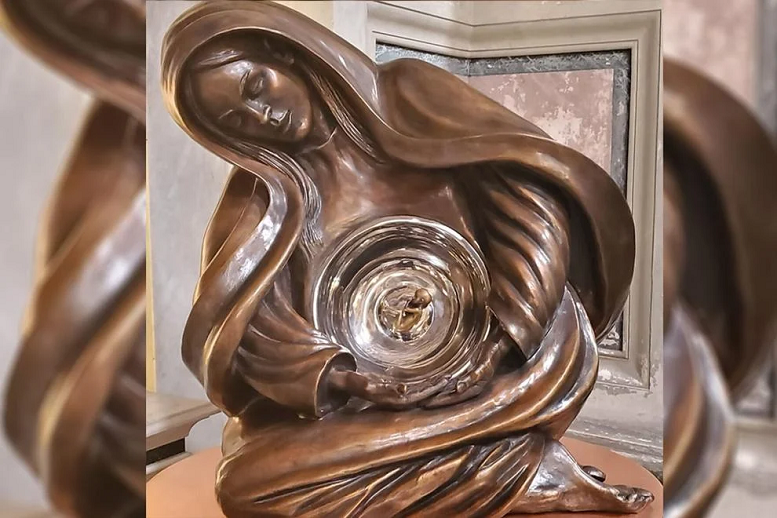
WWW.THECOUNTRYCOOK.NET
Cosmic Brownies
These Cosmic Brownies are homemade fudgy, chocolate brownies topped with a rich chocolate frosting, and sprinkled with colorful mini M&Ms!A RICH COPYCAT RECIPECosmic Brownies such a classic treat! They just dont taste like they used to though, do they? I think these companies start finding cheaper ways to make things and it really messes up the original flavor. So lets make our own! I dont think Ive met anybody who didnt love these little things. The brownie batter is an incredibly easy one-bowl recipe. These are pretty rich brownies so a little goes a long way (however, I could probably eat the whole batch myself!)FREQUENTLY ASKED QUESTIONS:Whats the best way to measure flour? It is VERY easy to accidentally measure too much flour especially if you are packing it into the measuring cup and then you end up with dry brownies. The most accurate way to measure flour is using a kitchen scale but I know not everyone has one. So, I like to suggest using the spoon and scoop method. Grab a spoon and stir the bag of flour lightly, spoon your flour into the measuring cup until it is heaping on top. Use the back of a knife to wipe away any excess flour. Doing this helps make sure you dont overpack the measuring cup by scooping it straight from the bag and using a knife flat edge helps make it even on the top so you dont end up with too much flour in these brownies. Why did my ganache layer crack? Unfortunately, this can happen for a few reasons. Typically this happens because the brownies didnt get too cool enough before adding the ganache. Then this can happen if the ganache doesnt set enough before trying to add the mini M&Ms. Dont cut them too soon either or theyll What is the best way to cut brownies? These brownies are rich and thick. Use a sharp knife to cut them. Make sure they have had plenty of time to cool and the ganache is set before you slice them. You can spray the blade of the knife lightly with nonstick cooking spray or run the blade of the knife under hot water to heat it up before slicing through. Wipe the blade clean with each pass through the brownies. Can I use a boxed brownie mix instead? Certainly, choose your favorite brand and give it a go. Youll want to use the directions for a 99-inch pan. How do I know when these are finished baking? The brownies are cooked through when the edges have set, but the center is still soft (but not jiggly.)The brownies will firm up further as they cool. Can I melt the chocolate chips without a microwave? The butter and chocolate chips can be melted using the stovetop in place of the microwave. Place the chocolate chips and butter in a large heatproof bowl. Sit the bowl over a saucepan of simmering water, ensuring the water does not come into contact with the base of the bowl, and stir until the chocolate and butter have melted.Remove from the heat, and set aside to cool for a few minutes before continuing with the recipe. What can I use instead of chocolate ganache? In place of the homemade ganache, you can use any chocolate frosting. The texture will be different and not like a cosmic brownie but it will still work. How to store leftovers and can I freeze them? Store these brownies in an airtight container in the fridge for up to 5 days. These brownies are suitable for freezing.Freeze in an airtight container for up to 3 months.Thaw in the fridge before enjoying. INGREDIENTS NEEDED: (SEE RECIPE CARD BELOW FOR THE FULL RECIPE)butter Unsalted butter was used in these brownies, however salted butter could instead be used. Just cut the added salt to 1/4 teaspoon instead of 1/2 teaspoon.semi-sweet chocolate chips The semi-sweet chocolate chips are used in both the brownie batter and frosting. These could be substituted with milk chocolate chips but it will make it sweeter.brown sugar The brown sugar can be substituted with granulated sugar, or a combination of 1/2 cup brown sugar and 1/2 cup granulated sugar.eggs If you have time, allow the eggs to come to room temperature. This will help them mix into the batter much easier.vanilla extract all purpose flour you cannot substitute self rising flour in these since no leavening agent is added.cocoa powder It needs to be unsweetened coca powder. Nestle and Tollhouse both make cocoa powder.salt If you arent a regular baker, you might think adding salt is strange to a sweet baked good but it does help offset the overall super sweetness. You wont actually taste salt in it though.heavy cream it has to be heavy cream here or it just wont set right. Dont substitute milk or even use half and half heavy cream only.mini M&Ms The mini M&Ms can be substituted with regular sized M&Ms if that is all you have or any other style of candy coated chocolate pieces.HOW TO MAKE COSMIC BROWNIES:Preheat the oven to 325F. Line a 99-inch baking dish with parchment paper.Set aside. Add the butter and chocolate chips to a large microwave safe mixing bowl.Microwave in 30 second increments, mixing well in between, until the chocolate and butter have melted. Add the brown sugar, eggs and vanilla extract to the chocolate mixture, and whisk until well combined.Add the all purpose flour, cocoa powder and salt, and mix until just combined.Pour the batter into the prepared baking dish. Bake on the middle rack for about 15-20 minutes, or until the edges have set and the center is still soft (but not jiggly).Allow to cool completely in the tin.To make the ganache frosting, add the cream to a large mixing bowl. Microwave for 1 minute. Add the chocolate chips to the heated cream, and allow to sit for 2-3 minutes.Mix until smooth and the chocolate chips have completely melted.Spread the frosting over the cooled brownie.Sprinkle over the mini M&Ms, and transfer to the fridge for 1-2 hours, or until the frosting is firm.Slice and enjoy.CRAVING MORE RECIPES?Copycat Hostess CupcakesButterfinger BrowniesGerman Chocolate BrowniesPeanut Butter Pie BrowniesRed Velvet BrowniesLemon BrowniesHomemade Brownie MixM&M Brownie Batter DipTurtle Brownies PrintCosmic BrowniesThese Cosmic Brownies are just like your favorite childhood treats (but better). Rich, decadent homemade brownies with a chocolate ganache layer and candy coated chocolate pieces on top.Course DessertCuisine AmericanPrep Time 15 minutes minutesCook Time 15 minutes minutesChill Time 1 hour hour 30 minutes minutesTotal Time 2 hours hoursServings 16Calories 344kcalAuthor Brandie SkibinskiIngredientsFor the Brownies: cup (1 stick) unsalted butter (see notes below) cup semi-sweet chocolate chips1 cup packed light brown sugar3 large eggs1 teaspoon vanilla extract cup all purpose flour cup cocoa powder teaspoon saltFor the Ganache Frosting: cup heavy cream1 cups semi-sweet chocolate chipsFor Topping: cup mini M&MsInstructionsPreheat the oven to 325F. Line a 99-inch baking dish with parchment paper (this will make it easier to remove after baking, see notes below.) Set aside.Add 1/2 cup (1 stick) unsalted butter and 3/4 cup semi-sweet chocolate chips to a large microwave-safe mixing bowl. Microwave in 30 second increments, mixing well in between, until the chocolate and butter have melted. To the same bowl add 1 cup packed light brown sugar, 3 large eggs and 1 teaspoon vanilla extract to the chocolate mixture, and whisk until well combined. Add 3/4 cup all purpose flour, 1/4 cup cocoa powder and 1/2 teaspoon salt and mix until just combined. Pour the batter into the prepared baking dish. Bake on the middle rack for about 15-20 minutes, or until the edges have set and the center is still soft (but not jiggly.) Allow to cool completely in the baking dish. To make the ganache frosting, add 1/2 cup heavy cream to a large mixing bowl. Microwave for 1 minute. Add 1 1/2 cups semi-sweet chocolate chips to the heated cream, and allow to sit for 2-3 minutes to allow the chocolate to melt. Mix until smooth and the chocolate chips have completely melted. Pour and spread this frosting over the cooled brownie. Evenly sprinkle 1/2 cup mini M&Ms on top then transfer to the refrigerator for 1-2 hours, or until the frosting is firm. Slice into 16 squares and enjoy. Note: You do not have to keep these refrigerated but the frosting will soften if it stays at room temperature. NotesPlease refer to my FAQs (Frequently Asked Questions) and ingredient list above for other substitutions or for the answers to the most common questions.You can use salted butter. Just adjust the amount of salt added to 1/4 teaspoon (instead of half a teaspoon.)You can just spray the baking pan with nonstick cooking spray (I prefer the kind with flour in it.) However, it can be a little tricky to sometimes slice and serve so I use the parchment paper.NutritionCalories: 344kcal | Carbohydrates: 37g | Protein: 4g | Fat: 21g | Sodium: 98mg | Fiber: 3g | Sugar: 27g
0 Comments
0 Shares
248 Views












